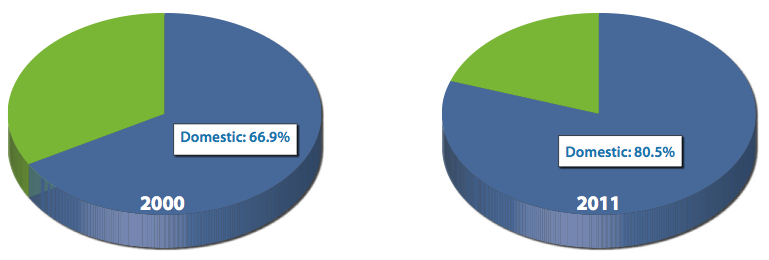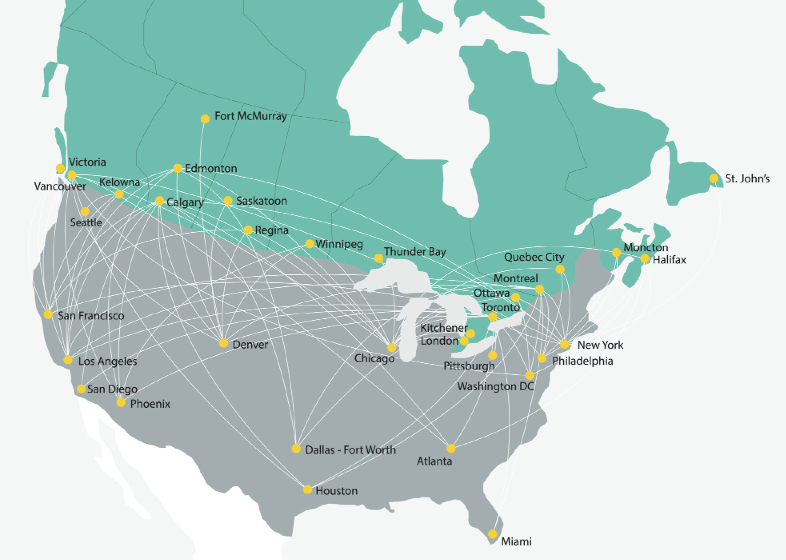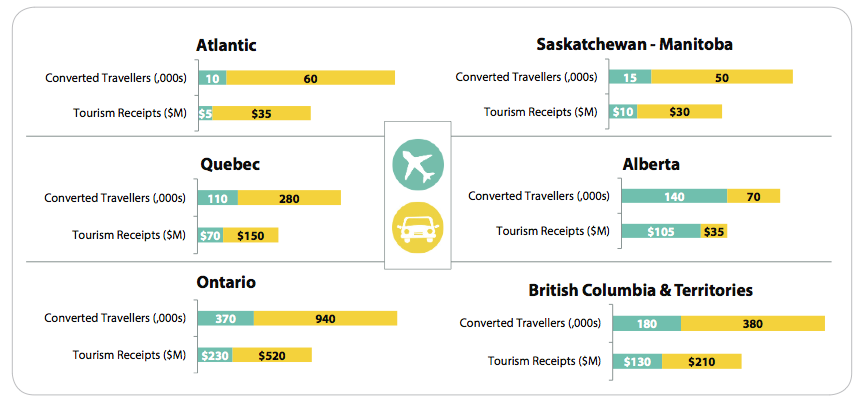 Travel and tourism is one of the highest performing sectors of the global economy, experiencing average growth of 4% and generating over $1 trillion of annual revenue.
Travel and tourism is one of the highest performing sectors of the global economy, experiencing average growth of 4% and generating over $1 trillion of annual revenue.
In 2014, there were more than 1.1 billion international travelers worldwide, a number expected to increase steadily by 3% until 2030, when there will be 1.8 billion international travelers. Great news, right?
Well, for most destinations, yes. Unfortunately for Canada, over the past decade international arrivals have dropped by 2%, well below the global average growth rate of 4%. Back in 2002, Canada was ranked 7th in terms of international arrivals. It gradually slipped down the ranking, hitting #18 in 2013. Read: Canadian Tourism: The Downward Spiral Continues
The Travel Deficit
The Canadian travel industry has many incredible products, attractions and destinations from coast to coast to coast. But you don’t need to convince us Canadians about this – back in 2000, domestic spending represented 67% of total tourism spending. 11 years later, domestic spending represented 80% of total tourism spending!

While there is nothing unusual with countries seeing strong domestic travel spending, this phenomenon becomes problematic when there is a dependency in place resulting from other markets not performing so well.
And here we have it, the elephant in the room: The Canada/US travel deficit.

As shown above, we can see clearly that the bulk of the travel deficit on the international level comes from the uneven spending with Canada’s southern neighbor.
This trend has gotten worst every year since 2000, hitting peaks after the US economy came to a halt in 2008, and the Canadian dollar was on par with its US counterpart shortly thereafter. All the more reason for Canadians to flock to California or Florida, while American travelers preferred a more exotic destination in Europe, Turkey or Asia.
Connecting America: 210M$ in 3 years!
Ask yourself this question: When was the last time you saw a TV ad, out-of-home display, web banner, cool Instagram pic or Vine video highlighting a vacation experience in Canada? If you are a US resident, chances are it’s been a very long time… In fact, at least five years, to be more precise.
In other words, Canada doesn’t exist for American leisure travelers, at least from a country-wide positioning standpoint. Sure, the Canadian Tourism Commission maintained a presence with media relations, as well as seeking to get more business travelers with meetings and conventions. But for leisure travel? It was up to provinces and city DMOs to make their own advertising efforts.
That was until now. Because for the next three years, the Canadian Tourism Commission will be Connecting America.

This new Connecting America program is in fact based on 1:1 lever participation from Canadian travel industry participants, matching a 35M$ funding per year from a new federal program announced on May 22nd, only a couple of months before next federal election. Surely just a coincidence, I am sure 🙂
UPDATE: The announcement made by Prime Minister Harper on May 22nd was in fact for 30M$ over a three year period. All other figures stated in this article come from the Connecting America report, found on TIAC’s website.
What we know so far is that the campaign will be based on “city pairs” to increase visitations from key regions across the US directly into almost every key Canadian international airport. A “rubber tire” component is also expected, targeting markets within a four hour drive.
Connecting America will aim to reach high-yield travelers, those deemed to influence mainstream travelers fairly quickly.
High Expectations
Unsurprisingly, with potentially 105M$ in public funding for this new program, there are high expectations for results, and rightly so.

Looking at the province of Ontario for example, Connected America is thus expected to yield an additional 1.3M travelers and 750M$ during the three years of the program.
Will it work? There are certainly some questions that remain, as we know nothing of the mechanics and campaign execution as of yet. What niches will be prioritized: culinary travel? festival & events? summer vs winter?
What proportion of investments in travel marketing will be online through savvy social media initiatives vs more traditional yet also effective campaigns on TV or other mass media?
70M$ per year during three years may seem like a lot of money, but only so if it wisely invested, according to industry-driven objectives. The Canadian travel industry finally gets what it has been asking for the past five years. Let’s make it count, shall we?









Leave a Reply